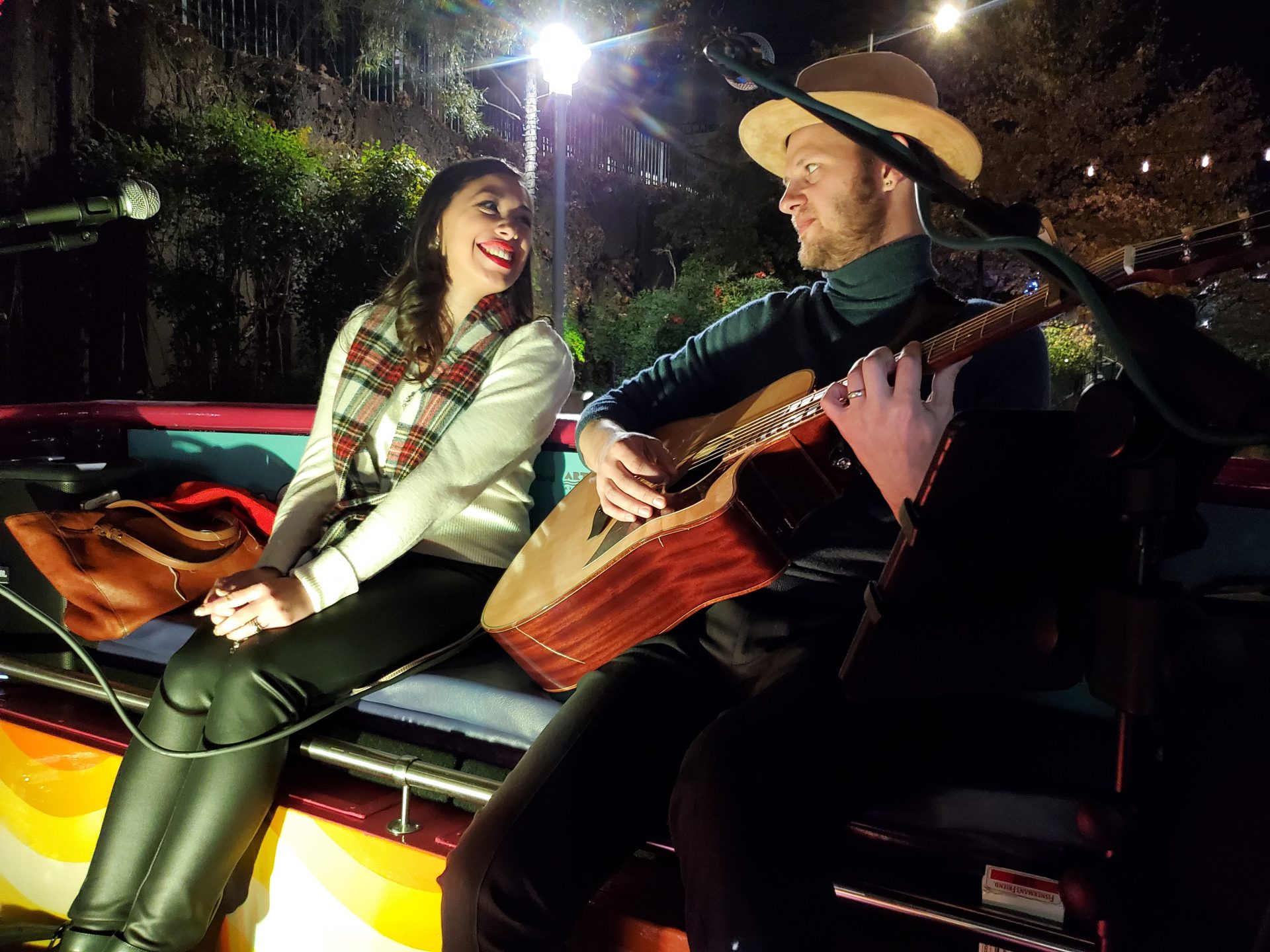
Emily and Chase McCumber perform at Art Afloat, an ongoing concert series on the Bricktown Canal.


Emily and Chase McCumber perform at Art Afloat, an ongoing concert series on the Bricktown Canal.
On an unseasonably mild early December evening, visitors board little boats on the Bricktown Canal, surrounded by Christmas lights and carolers, to hear Chase and Emily McCumber. They’re performing for Art Afloat, a concert series that’s been taking place most of this year — one of the first returns to live music in the city.
“Last year, we — in the summer especially — weren’t able to gig at all,” Chase said. “So we ended up not able to pay the rent several times. We had to have folks help us. And if we didn’t have that, well I don’t know what we’d do, right?”
They’re not alone in that. The city’s low cost of living has been a selling point for years. But even before COVID, rent was getting more expensive in Oklahoma City, where the population increased by more than 100,000 in the past decade. New housing hasn’t kept up. And critically, neither have wages. And existing housing continues to degrade.
“Yeah, our rent has gone up every year we’ve been there, I think — pretty significantly,” Chase said.
“And these are not new apartments,” Emily added.
“No, I mean they were built in the late 70s, early 80s, hardly any upkeep on them, but the price goes up on them every year,” he said.
Oklahoma City officials are aware of the problem. Robbie Kienzle is the Liaison & Program Planner in the city’s Office of Arts & Cultural Affairs. The city was working to support artists before the pandemic. Then COVID hit, and further complicated the effort. It’s not as tough on established artists.
“They’re resilient,” Kienzle said. “They’ve figured out other ways to make money. Maybe some were, you know, set up in a way that they could be small businesses and apply for some of the federal money that was available to keep living. But some of the other artists that I think that I become more more worried about are those that are emerging at the time that COVID hit.”
She says artists trying to get their start often can’t focus on their craft. The bills have to be paid.
“A lot of artists, as they’re emerging, they do have to rely on jobs that are like those almost-full-time jobs,” she said. “You know, maybe that 20- to 30-hour-a-week job just to kind of anchor them in things like food, utilities, rent, making sure they have transportation of some sort, even medical needs.”
Of course, those in the arts community are far from the only ones impacted by rising rents and the cost of living more generally. City officials contracted a Denver-based firm named Economic & Planning Systems Inc., to study housing trends and affordability in the area. David Schwartz presented the firm’s findings to the city council in late August, explaining that the city has seen noteworthy growth, but that not all residents have shared in the benefits. Wages have stagnated for many income levels.
“So between 2010 and now … we can identify that housing prices have appreciated to the point — and incomes have escalated only to a certain point — where some portion of housing units have become unaffordable to certain households of different income levels,” he said. “So you could equate this as effectively losing naturally occurring affordable housing.”
The question now is what to do about it. For an answer, Oklahoma City is looking toward other cities with thriving arts and culture scenes. Aneesha Marwah is with the consulting firm ArtSpace, which Oklahoma City brought in for help.
“I lived in New Orleans for about 10 years,” she said. “My passion for this really comes from, you know, who are the artist and economic drivers of community that really make your city special and really interesting and really unique? … Artists, to me, are at the helm of all of that. Why is New Orleans such a special place in this country? It’s because of the art. It’s the culture, it’s the music, it’s the scene. … You think Mardi Gras events, you think color, you think excitement. If there’s no place for people to live, then that joy of kind of making their home special isn’t there either.”
That goes for anywhere — including here.
“I remember the room we stayed in, in 21C, had the most beautiful fiber art that was done about a Native Tribe,” she said. “And you know, that’s that connectivity to what makes Oklahoma special. What makes this have its own identity. … You’re not going to have a group from Boston come in and tell the story of Tulsa’s Black Wall Street or the Native Tribes. You’re going to have someone in your community do that.”
But to do that, as it stands now, takes a lot. There’s no clear, easy solution.
“It’s a hustle, right? I think every musician — I don’t know one working musician that doesn’t hustle,” Emily said.
“They’ve got to be out every night of the week doing something,” Chase said. “Even if it’s just an extra 50 bucks. They’ve got to be doing it and catching as many gigs as possible —”
“A couple in a night, just to get by.”